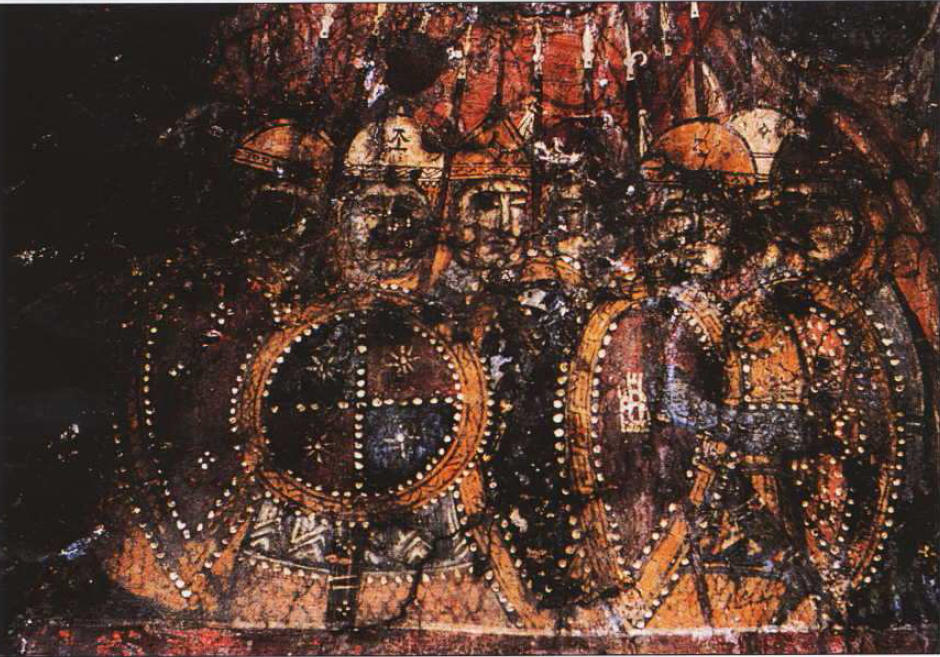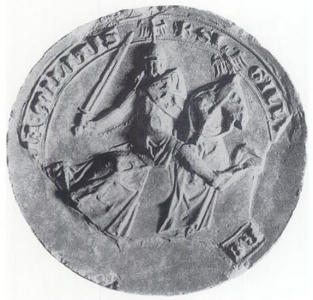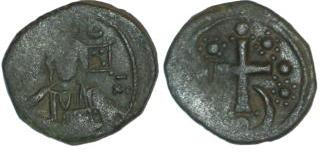
Shop Amazon - Create an Amazon Baby Registry
Soldiers at the empty tomb, Mural, Saint John Chrysostom Church, Geraki (Geronthres), Byzantine Morea, Greece, c.1300AD.

A detail of the soldiers’ helmets.
Image source: "A Sinic Ideogram in a Wall-Painting in Geraki, Laconia" by N. K. Moutsopoulus, 2011


